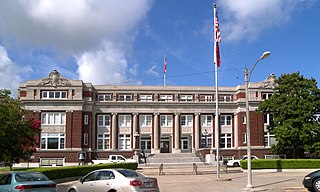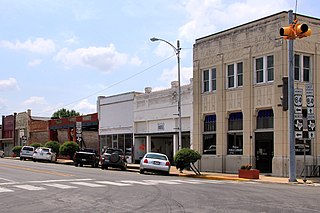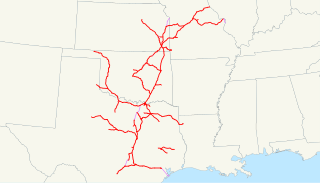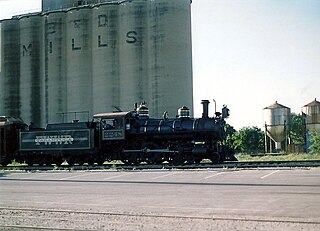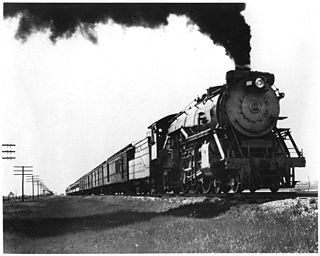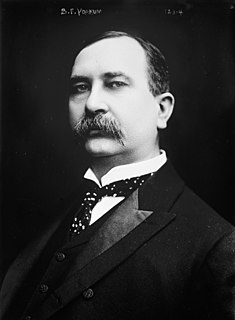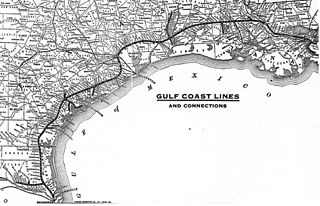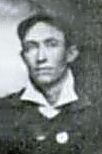This article needs additional citations for verification .(February 2016) (Learn how and when to remove this template message) |
| Reporting mark | TBV |
|---|---|
| Locale | Texas |
| Dates of operation | 1902–1930 |
| Successor | BRI |
| Track gauge | 4 ft 8 1⁄2 in (1,435 mm) standard gauge |
The Trinity and Brazos Valley Railway( reporting mark TBV) of Texas came into existence on October 7, 1902, originally chartered to build a railroad from Johnson County to the Beaumont area near the Gulf coast. It took its name from the Trinity and Brazos rivers. It was commonly known as the “Boll Weevil," though it referred to itself as the "Valley Road." [1] [ page needed ]
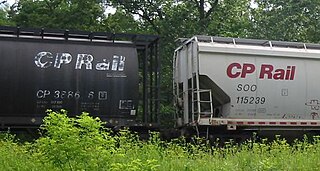
A reporting mark is an alphabetic code of one to four letters used to identify owners or lessees of rolling stock and other equipment used on certain railroad networks.

Johnson County is a county located in the U.S. state of Texas. As of the 2010 census, its population was 150,934. Its county seat is Cleburne. Johnson County is named for Middleton Johnson, a Texas Ranger, soldier, and politician.

Beaumont is a city in and the county seat of Jefferson County, Texas in the United States, within the Beaumont–Port Arthur Metropolitan Statistical Area. Located in Southeast Texas on the Neches River about 85 miles (137 km) east of Houston, Beaumont had a population of 117,267 at the time of the 2010 census, making it the thirtieth-most populous city in the state of Texas.
The first line opened between Hillsboro and Mexia in October 1903. It was extended north to Cleburne in January 1904, making a total of 78 miles of track between Cleburne and Mexia.

Hillsboro is a city in and the county seat of Hill County, Texas, United States. The population was 8,456 at the 2010 census.
Mexia is a city in Limestone County, Texas, United States. The population was 7,459 at the 2010 census.

Cleburne is a city in and the county seat of Johnson County, Texas, United States. As of the 2010 census the population was 29,337. The city is named in honor of Patrick Cleburne, a Confederate general. Lake Pat Cleburne, the reservoir that provides water to the city and surrounding area, is also named after him.
Financial problems in the system led to its purchase by Colorado and Southern Railway (C&S) on August 1, 1905. Benjamin F. Yoakum, a railroad executive who was a director of the C&S, was contracted to build more track in Trinity and Brazos Valley system. As part of the construction deal, C&S sold one-half of the securities issued for the project to Chicago, Rock Island and Pacific Railway (CRIP), making the T&BV half-owned by both CRIP and C&S parent Chicago, Burlington and Quincy Railroad.

The Colorado and Southern Railway was an American Class I railroad in the western United States that operated independently from 1898 to 1908, then as part of the Chicago, Burlington and Quincy Railroad until it was absorbed into the Burlington Northern Railroad in 1981.

The Chicago, Burlington and Quincy Railroad was a railroad that operated in the Midwestern United States. Commonly referred to as the Burlington Route, the Burlington or as the Q, it operated extensive trackage in the states of Colorado, Illinois, Iowa, Kansas, Kentucky, Missouri, Montana, Nebraska, Wisconsin, Wyoming, and also in New Mexico and Texas through subsidiaries Colorado and Southern Railway, Fort Worth and Denver Railway, and Burlington-Rock Island Railroad. Its primary connections included Chicago, Minneapolis-St. Paul, St. Louis, Kansas City and Denver. Because of this extensive trackage in the midwest and mountain states, the railroad used the advertising slogans "Everywhere West", "Way of the Zephyrs", and "The Way West".
A southern extension of 224 miles from Mexia to Houston was built from 1905-1907. An extension was also completed between Teague and Waxahachie in 1907. T&BV contracted with the Missouri-Kansas-Texas Railroad (MKT) between Waxahachie and Dallas, while it used Gulf, Colorado and Santa Fe Railway (GC&SF) tracks on its northwestern end between Cleburne and Fort Worth and on its southeastern end between Houston and Galveston. In Houston, T&BV took a one-quarter interest in the Houston Belt and Terminal Railway, which was being built by Yoakum at the time.

Waxahachie is the county seat of Ellis County, Texas, United States, and lies just beyond the southern suburbs of Dallas. The population was 29,621 at the 2010 census, with an estimated population of 32,344 in 2014.

The Gulf, Colorado and Santa Fe Railway was a subsidiary of the Atchison, Topeka & Santa Fe Railway in eastern Texas and to Purcell, Oklahoma.

Fort Worth is the 15th-largest city in the United States and the fifth-largest city in the state of Texas. It is the county seat of Tarrant County, covering nearly 350 square miles (910 km2) into four other counties: Denton, Johnson, Parker and Wise. According to the 2017 census estimates, Fort Worth's population is 874,168. The city is the second-largest in the Dallas–Fort Worth–Arlington metropolitan area, which is the 4th most populous metropolitan area in the United States.
The Trinity and Brazos Valley was placed into receivership on June 16, 1914, having been unprofitable since 1905. Its trackage rights with MKT and GC&SF were canceled at that time. The receiver appointed was John W. Robins, replaced by L.H. Atwell and then John A. Hulen in 1919.
In 1930, the business was reorganized as the Burlington-Rock Island Railroad Company with Hulen as the first president. Operating 303 miles of track at that time, BRI was still owned by CRIP and C&S.
The Burlington-Rock Island Railroad came into existence on July 7, 1930, through the reorganization of its predecessor, the Trinity and Brazos Valley Railway Company (T&BV), nicknamed the "Boll Weevil Line."

Today,[ when? ] the trackage from Teague to Houston is still in use as part of BNSF Railway. The portion from Teague to Cleburne has been abandoned.

The BNSF Railway Company is the largest freight railroad network in North America. One of eight North American Class I railroads, BNSF has 44,000 employees, 32,500 miles (52,300 km) of track in 28 states, and more than 8,000 locomotives. It has three transcontinental routes that provide rail connections between the western and eastern United States. BNSF trains traveled over 169 million miles in 2010, more than any other North American railroad. The BNSF and Union Pacific have a duopoly on all transcontinental freight rail lines in the Western U.S. and share trackage rights over thousands of miles of track.
